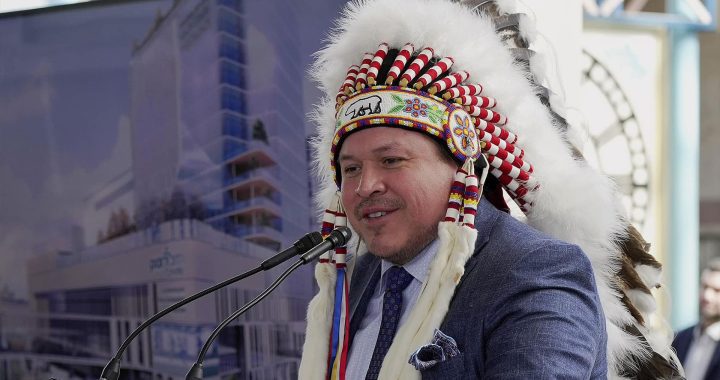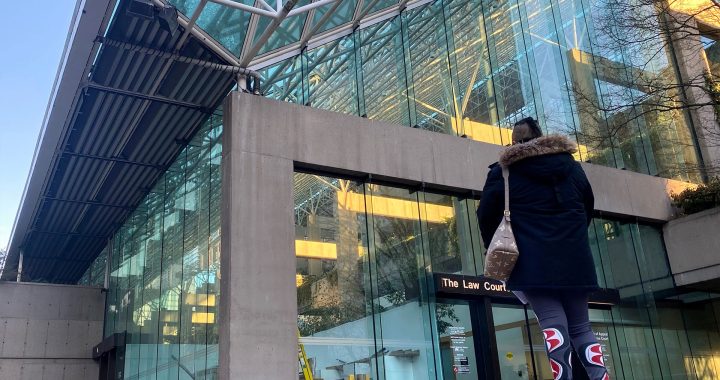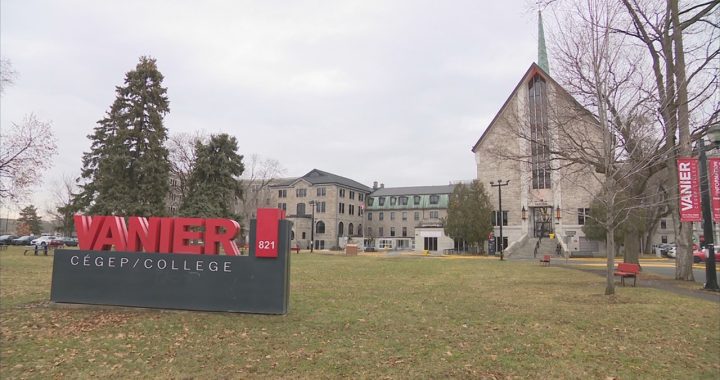Perched atop a hill in the tundra looking out at the Koksoak River, the new Isuarsivik building gives its guests easy access to the land – something land coordinator George Kauki said is necessary for Inuit to recover.
“We’re very connected to the land, Mother Nature, it brings us a lot of peace. It’s basically natural therapy to us,” said Kauki.
The Isuarsivik Regional Recovery Centre has reopened its doors to Inuit looking to heal from addictions in a renovated facility in Kuujjuaq, an Inuit community with a population of 2,700.
Established in 1994, Isuarsivik was originally a community-based centre for adult Inuit from the Nunavik region, the Inuit territory in northern Quebec, struggling with addictions, with a nine-bed capacity.
Now, the new centre holds up to 32 people, including family members with added services like childcare, well-stocked art rooms, and private rooms for families. An Isuarsivik guest’s extended family or friends are also welcome to join them at the Centre – whomever they consider to be family. The centre is also providing more frequent land-based activities.
Isuarsivik also went from 20 staff members to 70. Sixty per cent of them are Inuit, including Kauki.
Kauki has been through his own healing journey – having dealt with his past alcoholism by getting in touch with his Inuit culture.
“I didn’t take much counselling when I was going through problems, and a lot of my therapy was my alone time on the land. My time travelling, my time dogsledding, my time just hunting in general. It made me reflect on life a lot,” said Kauki.
He’s been taking Inuit out on the land for years to give them the same treatment.
“I find them much calmer in a sense when they’re out with us, versus being inside a building, they’re not at ease. When they’re going out on trips, they get to reflect on themselves,” he said.
At the official reopening on Sept. 20, people shared their hopes that the centre would help address the high addiction and suicide rates in Nunavik, the Inuit territory in Northern Quebec.
“We’ve all been touched by this, one way or another. I’m not immune from it,” said Makivik president Pita Aatami through tears at the reopening ceremony.
During the press conference, speakers explained that Isuarsivik takes a harm-reduction and trauma-informed approach, while seeking to address social causes of addiction like housing and poverty. In other words, Isuarsivik provides community care, said executive director Etua Snowball.
“We used to help each other, and help, you know, if there was a problem within the family or within the community, they would help together and work on it together, and this is something that when you’re in Isuarsivik, this is the feeling that you get,” said Snowball.
Youth counsellor Anita Annanack said that counsellors seek to connect with their clients rather than keeping them at a clinical distance.
“At the end of the cycle it’s really, like, [a] ‘don’t go back home’ kind of feeling. We really connect to each other. We start like, we start growing together,” said Annanack.
“When they come here, I have to start opening up to them. Like this is who I am, [and] they start following,” she said.
The new program was tested out on a pilot group this past spring.
Alison Meshner, the youth coordinator, said she noticed the program gave some parents the chance to spend time with their children.
“They weren’t always together, all the time. So when they when they came into our program, it was reconnecting them, just through activities, family sessions and stuff like that,” said Meshner.
Meshner said that as a mother, she hates being away from her children for even a workday – let alone eight weeks, the duration of Isuarsivik’s program.
“Like the colonial cycle that was… our children were being taken away like I can imagine how it must feel for our past guests that came here without their um, children were like feeling that void,” said Meshner.
But with a bigger centre comes a bigger budget. Isuarsivik is paid for by the two Nunavik regional government groups – Makivik Corporation and Kativik Regional Government – as well as the Nunavik Regional Health Board and, more recently, the Quebec government, as well as grant money including the $1M Arctic Inspiration Prize it won last year.
Isuarsivik has been granted official certification by the Quebec ministry of Public Security as offering addictions services and inpatient programs, but it’s a registered not-for-profit organization – so it’s not fully funded by public dollars, unlike addictions recovery treatment operating out of Quebec public health clinics.
At the reopening ceremony, the Quebec government announced $9.3 million for Isuarsivik’s operational funds over the next three years, in addition to the $8.5 million they contributed to build the new centre.
“We heard the request for proper funding for the next three years, so I don’t want to talk about numbers. I just want to make sure that you don’t have to worry about this. Worry about people, not the numbers. We’ll be there,” said Quebec’s Indigenous Affairs Minister Ian Lafrenière at the press conference.
“We need to ensure proper funding for the next years. Because what’s being done here is wonderful… it’s a great example of cultural security.”
The federal government has contributed $29 million to the construction of the new centre and helps fund the Nunavik Regional Board of Health. Indigenous Services Minister Patty Hajdu said they’re working on expanding funding for programs like Isuarsivik.
“The important change is that this isn’t about treatment facilities that are being delivered by white people, designed by white people, often without really any understanding of the trauma that people have lived through. This is by Inuit, for Inuit with that sustainable funding that they need,” said Hajdu.
But Isuarsivik’s annual operational budget has risen to around $10 million and while they’ve secured money for the next year, an Isuarsivik representative said they are still securing more cash from external sources for the years to come.
Snowball said he hopes for more long-term funds from all levels of government.
“Just have reoccurring funds that we can provide for operational funds and not having to look elsewhere, this is a dream, this is something we’re going to work towards, and when I do meet with ministers that’s what I tell them, that’s what we need,” said Snowball.
Hajdu said she hopes that will be possible in the future.
“That for me is the important message that Canadians hopefully will hear is that reconciliation is not just about talking about the past trauma, it’s about transforming our systems so that Indigenous people have their inherent rights,” she said.
Ultimately, Snowball wants to make sure his people know they have a place to heal.
“This is something that I recommend people to look into, to make sure that we do have facilities to help our people within Nunavik, for beneficiaries, and I encourage them to reach out and join us,” said Snowball.
The next Isuarsivik cohort is set to begin their healing journey Oct. 11. To sign up for Isuarsivik’s in-person program and/or virtual sessions, visit isuarsivik.ca.










